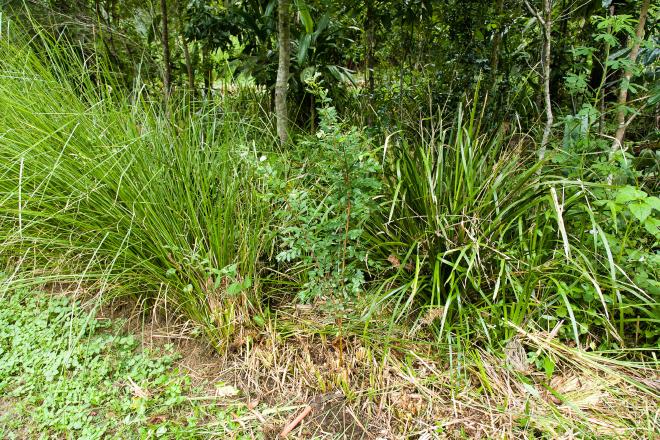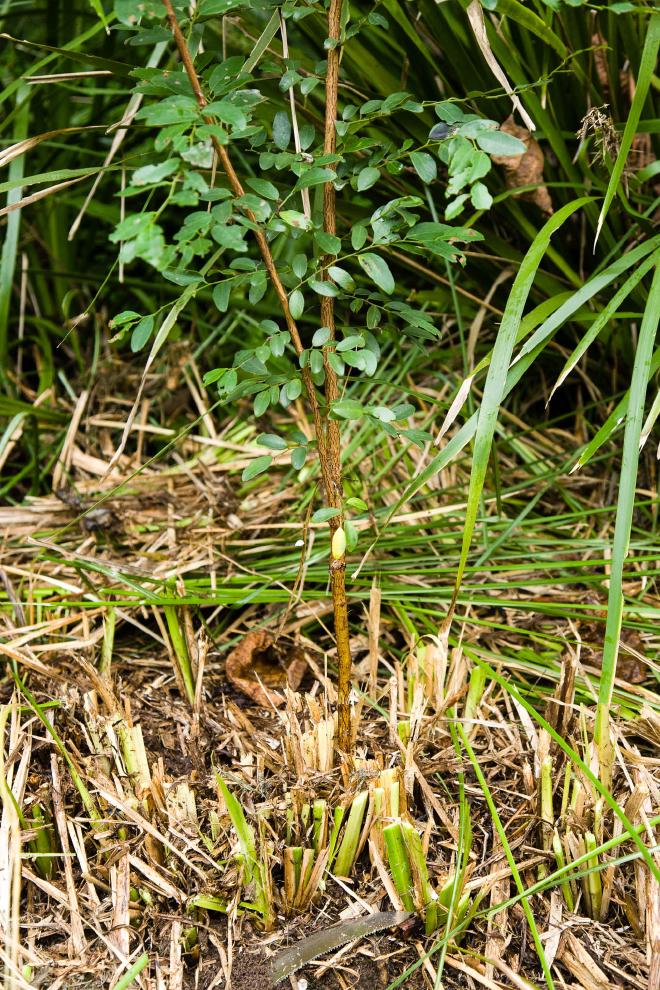Autumn Maintenance
As the cooler temperatures creep closer; propagating, planting, and division of Vetiver is put on the backburner and general maintenance of neglected clumps and hedges takes over.
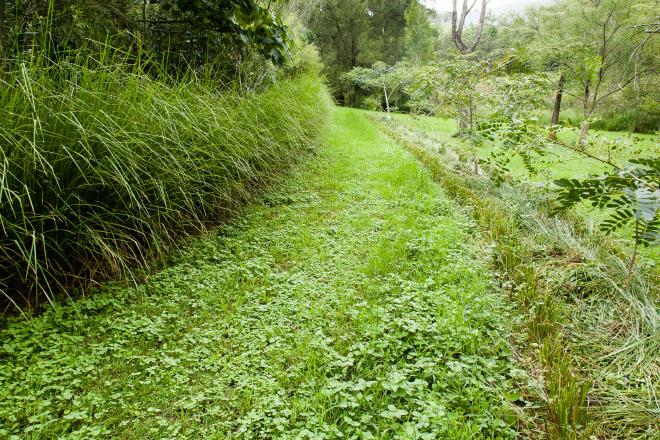
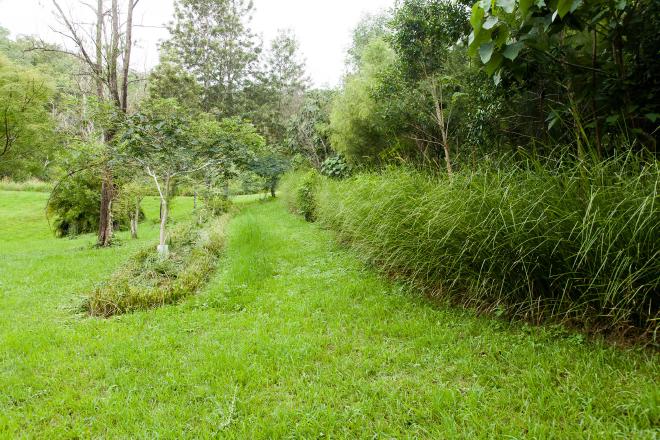
This hedge was first planted in January 2014 and took another 2 growing seasons to complete as my supply was low in the early days.
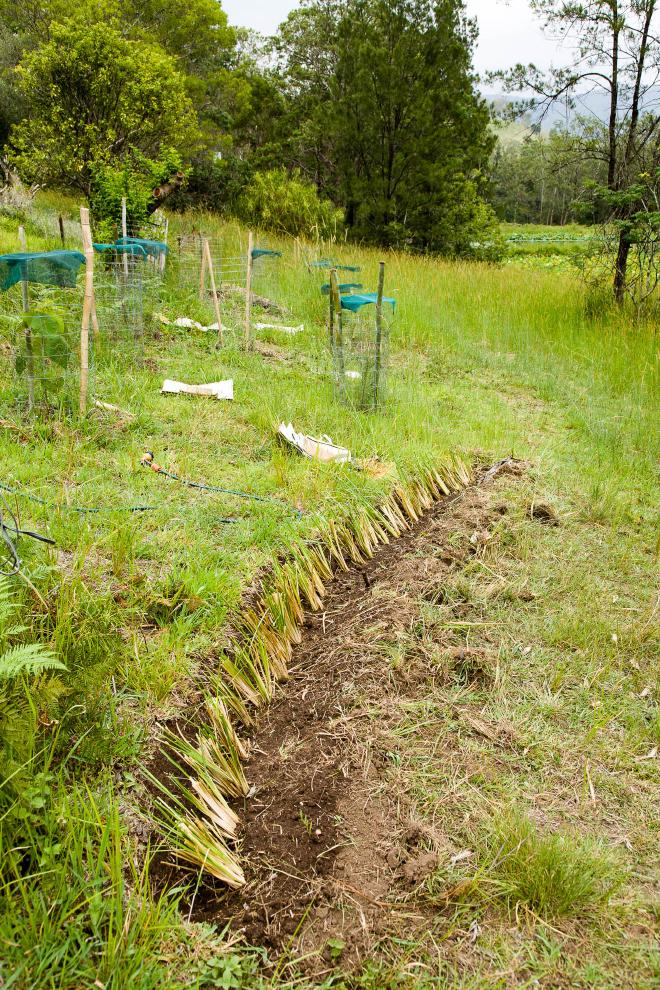
After 6-ish years of sporadic cutting at approximately 30-40cm high, I decided to cut the hedge down lower to the ground to ‘refresh’ the clumps and remove the dead material inside (semi-composted due to age) to help encourage the young planting that the Vetiver protects. As the hedge doesn’t receive any overland flow of water or silt, cutting it low will not affect its use case as a garden border.
Here you can see the hedges in 3 stages of maintenance; uncut, 2/3rds cut (for mulching somewhere else), and then cut as low as it can go with a serrated hand sickle with that material placed behind the hedge.

The majority 2/3rds of the leaf was used to mulch the lower Albizia planting visible in the first two photos, the shorter and more dead material was used to cover bare ground and mulch the hidden Doryanthes planting that will provide an experimental firebreak later in life which is situated behind hedge.
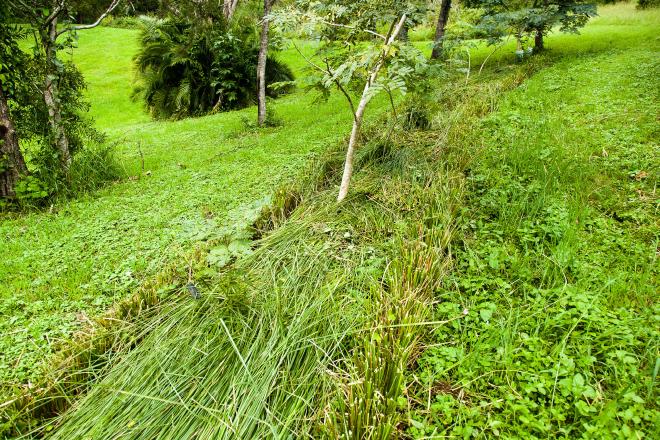
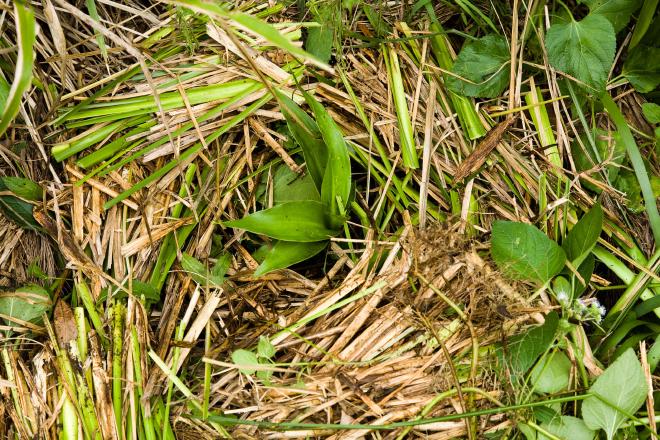
Even though Vetiver is a dominant grass, native (and weed) tree regeneration can occur in the hedges which demonstrates its ability to pioneer revegetation sites and then be shaded out by subsequent tree growth. This Breynia is happy to be growing where it is.
